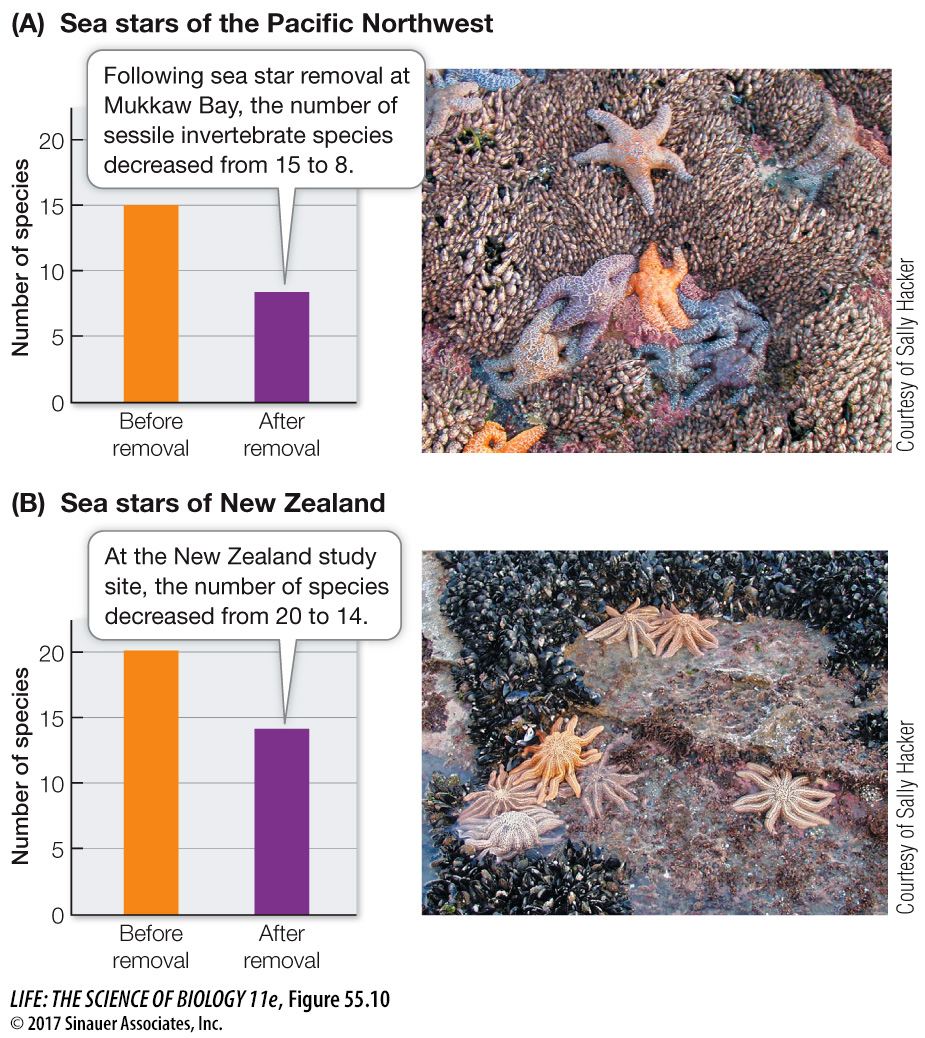Predators can have dramatic effects on communities
As you might imagine, given the reduced growth, reproduction, and survival of prey, predators (including parasites) can have dramatic effects not only on populations but also on communities.
One classic experiment, conducted by Robert Paine in the mid-1960s, showed the strong role that sea star predation has on rocky shore communities of the Pacific Northwest of North America. Paine noticed that one species in the community, the mussel Mytilus californianus, dominated in certain zones of the intertidal when the density of its sea star predator (Pisaster ochraceus) was low. Through the continual removal of Pisaster from the rocky shoreline, Paine showed that sessile invertebrate species number declined as the mussel monopolized space in the absence of its predator. After nearly 3 years, the experimental plots had roughly half the number of sessile invertebrate species compared with the natural condition where Pisaster was present (Figure 55.10A). Subsequent experimental removal of sea stars on New Zealand rocky shores, which share no species in common with the Pacific Northwest, resulted in similar reductions in sessile invertebrates (Figure 55.10B). Paine’s research on the sea star–mussel interaction showed not only that predation can affect the number of species in a community but that the effect can be controlled by one or a few species, which Paine called keystone species (named after the single wedge-shaped stone in the center of an archway called the “keystone” that holds all the other stones in place). Keystone species have large effects, not because of their abundance but because of the important role they play in communities. You’ll learn more about keystone species in Chapter 56.

Figure 55.10 Sea Star Predation on Mussels Has Community-Wide Effects Along the coasts of the Pacific Northwest of North America and New Zealand, sea stars preferentially feed on mussels, creating bare space for other sessile invertebrates such as acorn and gooseneck barnacles. Experiments by Robert Paine demonstrated that when sea stars were removed from the rocky shore, mussels outcompeted other sessile invertebrates for space, resulting in a decline in the number of invertebrate species in both (A) the Pacific Northwest and (B) New Zealand.
Some of the most compelling examples of the effects of predation on communities come from human-caused events such as the extinction (or near extinction) of predators, as in the case of wolves living in Yellowstone National Park (see Key Concept 56.3), or from the introduction of novel predators into communities. As you saw in the opening of this chapter, the inadvertent introduction of lionfishes to the Atlantic Ocean from the Pacific Ocean has led marine ecologists to hypothesize that there may be drastic effects for reef communities.
